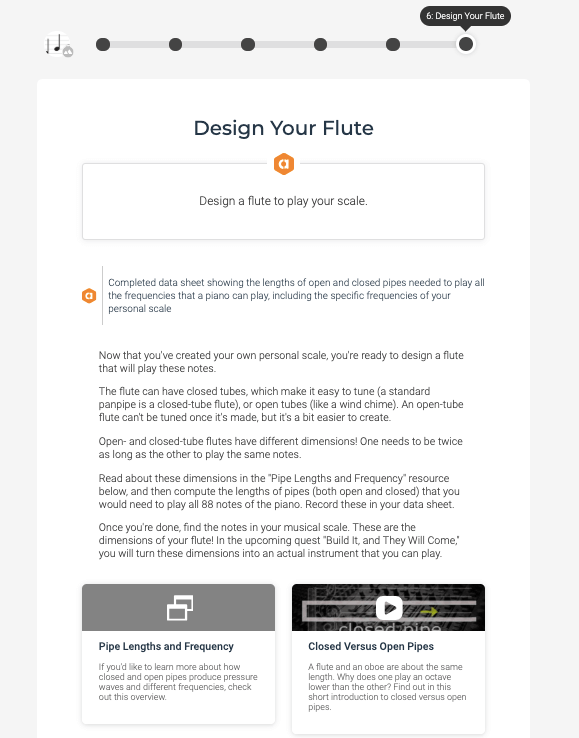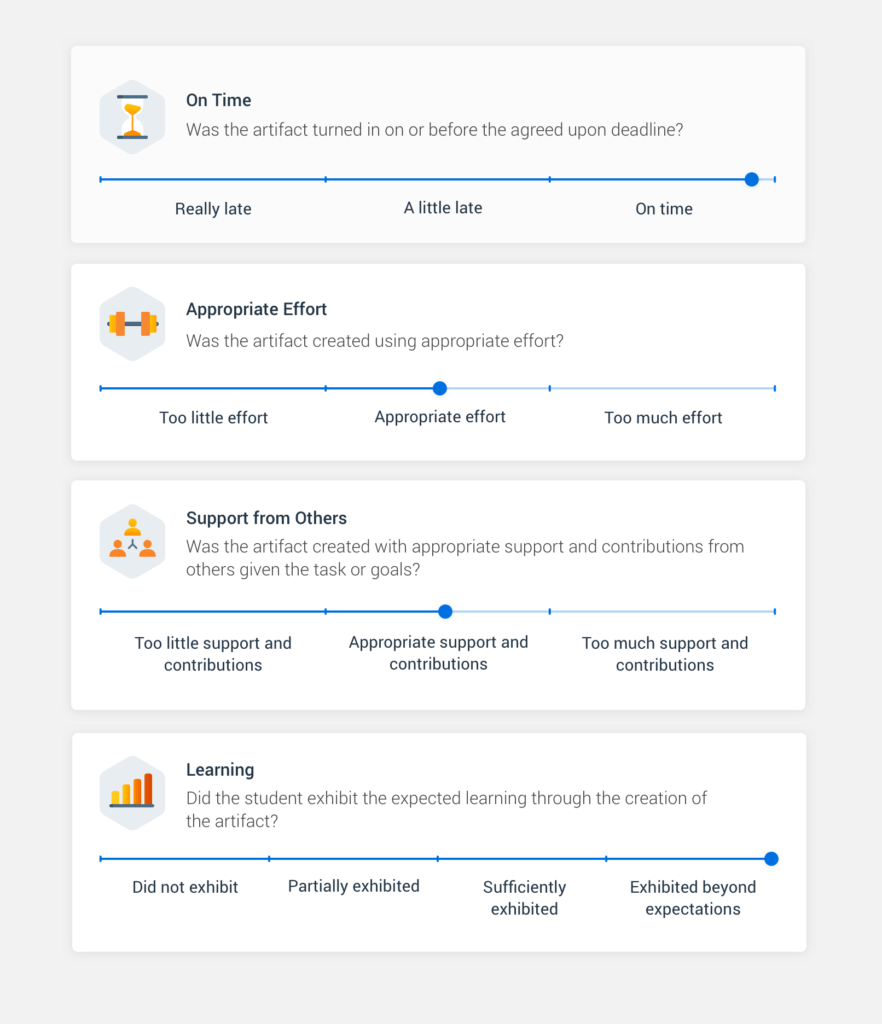Adventures in Artifacts: Building to Learn
For most people, the term “artifacts” may conjure images from the Indiana Jones movies. But artifacts are part of everyday life for Quest Forward Learning students. They are the products students create while completing quests. Artifact means more than an assignment or homework; an artifact represents an expression of student thinking, understanding, and skills at a particular moment in time.
Artifacts serve four main purposes in Quest Forward Learning:
- Artifacts help students learn. Students gain knowledge and skills by creating, reflecting on, and discussing artifacts with peers and mentors. Creating artifacts can help students make sense of what they’re working on and make connections between old and new knowledge. Creating artifacts involves active and often social learning, and can increase student engagement with the learning process.
- Artifacts enable effective assessment of learning. Artifacts are evidence that mentors can use to assess student learning, and are a basis for providing feedback to help students improve and further develop knowledge and skills.
- Artifacts are stepping stones. Small and medium artifacts serve as incremental steps towards a large artifact, defined as a course’s final project. These smaller steps make the final project less overwhelming, since students are able to see how they’ve developed the skills and knowledge to complete smaller projects successfully, building toward broader comprehension over time.
- Artifacts provide a historical record. Artifacts serve as documentation of student work, learning, and growth and can be used to communicate abilities and interests across the Quest Forward community and beyond.
Some artifacts are small, intended to help students develop understanding, practice a skill, or encourage reflection. This might include writing a summary, or creating a list of ideas. For example, in a Social Sciences quest called Monkey Business, students explore the concept of irrational decision-making, while also learning about monkeys’ decision-making skills. (Turns out humans and monkeys aren’t all that different!) Students create a small artifact (a written reflection), noting their own personal decision-making approaches. This artifact requires students to reflect on what they’ve learned not only about decision-making in general, but specifically about their own decision-making. Larger artifacts require more time and effort to complete. In a Science quest from the Chemistry of Food course called A Bit of Bubbly, students learn about the chemistry behind fermentation. The final artifact is a food they ferment and an accompanying report that explains their process and outcomes.
Artifacts also play an important role in project-based courses. Final projects consist of at least one artifact, but artifacts are also created throughout a course to help guide student learning and skill development so that students have the skills and knowledge to complete the final project. In the Mathematics and Science course Music, students learn about music and sound, and complete a series of artifacts that build up to the creation of a musical instrument. In the quest Create Your Own Scale, students explore the relationship between frequency and wavelength by creating a musical scale and designing a flute to play it. This quest and the artifact prepare students for designing an instrument of their choosing later in the course, applying mathematical and scientific discoveries about how sound works to their creations.

The artifact examples above mention supporting students by having them apply or reflect on the skills they gain. Artifacts require students to actively build knowledge while creating a tangible product. And, let’s face it, they also sound fun!
Students share their artifacts with mentors by uploading a file or presenting them in person, inviting discussion and detailed feedback. Soon mentors will also be able to provide feedback on artifacts using the Quest! app, assessing them on the basis of: timeliness, appropriate effort, appropriate use of resources, and demonstration of intended learning. (This feature is currently being prototyped at the two US academies, with an initial version coming to Quest! Web in summer 2019 and Quest! Tablet in winter 2020.)

Looking ahead, a priority for Quest Forward Learning students is that they each have a portfolio they curate throughout their time in high school and eventually make aspects of it public. By the end of their high school experience they then have a record of their work, learning, and changes in skills and interests over time. This will be something tangible they can share with family, potential employers, or college admissions to demonstrate their abilities beyond the traditional markers of success (such as test scores). The artifacts Indiana Jones collected in his movies served as souvenirs of his action-packed adventures. Though there are no “Lost Arks” or “Crystal Skulls” in Quest Forward Learning, the artifacts students create and curate are reminders of what they have learned through their adventures in high school.
